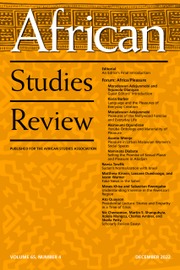As the editors note, scholarship on relationships that developed between Eastern bloc Communist parties and Africa is extensive but connections between African political movements and Western European Communists are understudied. Certainly, Western Communists—including the Belgian, Italian, Portuguese, and French activists that populate this book—paid attention to the Comintern’s directives and subsequent strategic conceptions from Moscow but they also had their own views about the future of imperial or postcolonial territories. These could prompt them to identify strongly with anti-colonial struggles, as in the case of Italians with respect to North Africa, but it also could inhibit or complicate any support. The tensions between French Communists and Algerian nationalists are illustrative.
An outline of relevant Comintern strategies supplies helpful background. After 1936 with the advent of popular front policies, Communist “actions carried out in the direction of anti colonialism came to an end” (37). That was certainly so in Algeria where after a vigorous decade of “transgressing the colonial order” (47), in 1936 the Algerian section of the French Communist Party abandoned confrontation with the authorities. A similar sequence characterized the French party’s history in Madagascar. Here from 1929, the French Communist organization grafted itself onto peasant resistance to taxes and land seizures but the beginning of the Popular Front caused the party to “downplay Madagascan separatism” and eventually disavow its Madagascan organization (61). However, investigations of the role of Italian Communists in Tunisia tell a different story. In Tunisia, Italian immigrants and Jewish refugees motivated by anti-Fascism encouraged an Arabization of the local section of the French party and aligned themselves with nationalists. Meanwhile, in Ethiopia, Comintern’s Popular Front policies initially persuaded Italian Communists to soften the rhetoric they had directed against “our brothers in black-shirts” (100) deployed in Mussolini’s invasion, but by 1938 they were ready to dispatch missions that would fight on Ethiopia’s side.
Immediately after the Second World War, the French and British parties “proposed post-colonial relationships that assumed continued metropolitan dominance” (111). This was also the case with the Belgian party that in the 1940s had uncritically championed Congo’s industrial exploitation as a contribution to the war effort. Belgian Communists turned sharply in 1950 to denounce the regime in the Congo as odious and to build an anti-colonial program. Any Congolese roots the party developed were by 1961 “totally effaced,” though, destroyed by “assassinations, purchase and the attraction of power” (209). In France, the party still found itself at odds with Algerian Communists during the 1954–61 independence war. Here there was a diversity of voices within the metropolitan party elite, as is evident in the account of Louis Aragon’s responses to Algerian nationalism. Among party rank and file in France there was often easier solidarity with Algerian migrant workers during the 1950s. Elsewhere in Africa, the “Gallocentrisme” (225) of the French party was conspicuous even in settings in which there were no French working-class settlers. French Communist paternalism emerges rather sharply in a comparison between the French and Italian parties’ relations with the Union des Populations du Cameroun.
As had happened in the late 1930s, anti-Fascism continued to shape Italian Communist engagement with Africa. From 1957 solidarity activities on a major scale engaged thousands of party activists and prefigured the Euro-Communist movement as Italian communists attempted to build alliances across the Italian left. Italian Communist acknowledgement that there could be different pathways to socialism was reflected in the diversity of partners it found in 1968 in its effort to unite left-wing groups around the Mediterranean at a conference it hosted in Rome. Here it persuaded the Front de libération nationale (FLN) as well as Guinea-Bissau’s Partido Africano para a Independência da Guiné e Cabo Verde (PAIGC) to criticize the Soviet invasion of Czechoslovakia, a rare example of solidarity having ideological effects. Italian support for the Lusophone anti-colonial movements was especially evident in 1970 when it helped to arrange an audience between Pope Paul VI and the People’s Movement for the Liberation of Angola (MPLA), PAIGC, and Frelimo principals. Italian Communist backing for African movements was unusually localized, with municipal party organizations undertaking their own initiative as with the “twinning” undertaken between the Communist stronghold in Reggio Emilia and the African National Congress. Emilia remains today a region governed by left-wing politicians, and arguably here solidarity may have had a longer-lasting domestic effect. Less rewardingly, Italian Communist efforts to maintain supportive relations simultaneously with the post-1974 Derg in Ethiopia, The Eritrean Liberation Front, and Siad Barre’s Somalia were complicated and ultimately futile, leading by 1990 to an “exhaustion of ‘African politics’ of the PCI” (236). Portuguese Communists’ impact on African movements was probably more penetrating, though the Party’s entanglement in the factionalism that accompanied the MPLA’s accession to power in 1974 curtailed its influence.
The volume’s contributors offer few insights about any British party activities affecting Africans. This is a pity. They were not so inconsequential. For example, British Communists had important engagements with the South African party, notwithstanding its “relative autonomy” (112). In a French African oriented collection, the absence of any extended consideration of Guinea is puzzling. Here during and even after the Popular Front government, French Communists took up positions in colonial administration as teachers, technicians and military officers. They started up Marxist Leninist study groups and had a profound influence. The Guinean branch of the Rassemblement Democratique Africain (RDA) was very receptive to Communist ideas. The French party helped shape both the organizational form and the ideological orientation of the RDA, probably with longer term effects than anywhere else. More than in any of the other African national settings explored in this book, in Guinea Communists made a difference, historically.


